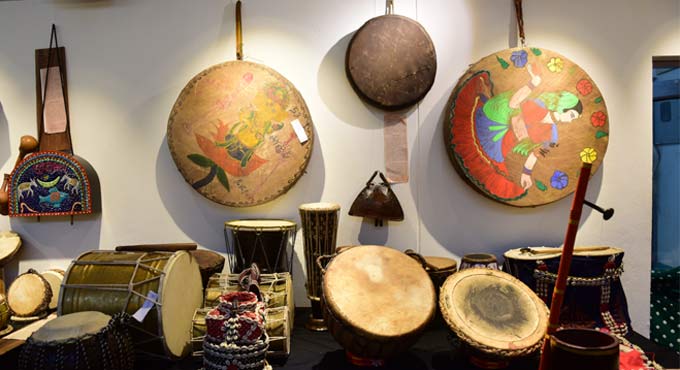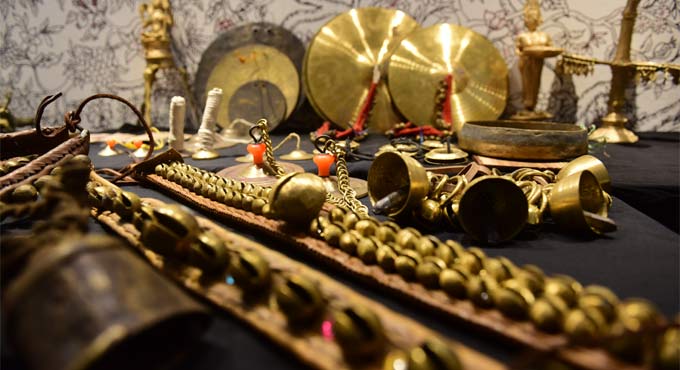Voice of the forgotten folklore
An exhibition showcasing centuries' old manuscripts, musical instruments and more -- organised by Prof Jayadheer Tirumala Rao -- is currently on at Saptaparini
Published Date - 2 November 2020, 05:19 PM
Dokro instruments and wooden-percussion musical instruments give a distinctive appeal to the Telangana’s rich history of folklore. The annual art exhibition at Saptaparni cultural centre in Banjara Hills is teaming with activity as art lovers swarm in to catch a glimpse of the rare and primitive art pieces that are on display.
In another section, a manuscript dating back to some 300 hundred years, has the story of Jambapuran. And another book (made of animal skin) has pictures and tales of Shakti Maata. Not just pictures, the manuscripts comprise a detailed story written in Brahmi script. Some manuscripts were written on camel bones while elephants’ thigh bones were used for inscriptions. The objective of these manuscripts back then was to make the written words last long, for they thought that it should withstand the wear and tear of ages and get passed on to the next generation.
“The exhibition is mainly about showcasing the forgotten art and culture of Telangana folklore. The present exhibition will surely give a peek into the rich culture of Adivasis and folklore. It’s an attempt to spread awareness among the present generations. As many as 240 musical instruments are on display. Of them, 20 musical instruments and artistes who used to play them are on the verge of extinction,” says Prof Jayadhir Tirumala Rao who has been instrumental in reviving the lost art. The retired Prof of Telugu University is also involved in imparting art and music to aspiring artistes and youngsters.
“Gradually, the writings have been evolving and palm leaves came into use by people to convey their culture, customs and traditions depicted in the form of stories. But palm leaves can’t endure more than 400 years; they would gradually wither away as times passes by,” said Mettu Venkata Narayana, who has been assisting Prof. Tirumala Rao in holding art exhibitions, and research.
Paper scrolls measuring more than 10 metres depict several topics of history, janapada folk tales, village records, Ayurveda, Unani, events pertaining to royal families, etc. One paper scroll has the story of the history of castes and artisans — their daily rituals and practices in a typical village. “Caste-based professions of Yadavas, herdsmen, village potters were widely written on the paper scrolls. All have been written in Telugu (‘Golusu Kattu’ writing),” says Venkata Narayana.
Manuscripts pertaining to the followers of Telugu poet Bammera Pothana, who belonged to the Telangana region, date back to around 500 years. “These palm leaves are about Bhagavatam: 10 Dashavataras of Lord Vishnu (10 incarnations of Lord Vishnu) written by Pothana’s ardent disciples. However, they had not taken credit. They had just mentioned ‘Vrasagadu’ (writer) in the end of the script,” he says.
Dates of some rare writings can’t be assessed perfectly. Some of them were found in the interiors of Karimnagar district and some of them are from the BC era. “Historians can identify them based on the origin of Telugu language and important events occurred in the history,” he says.